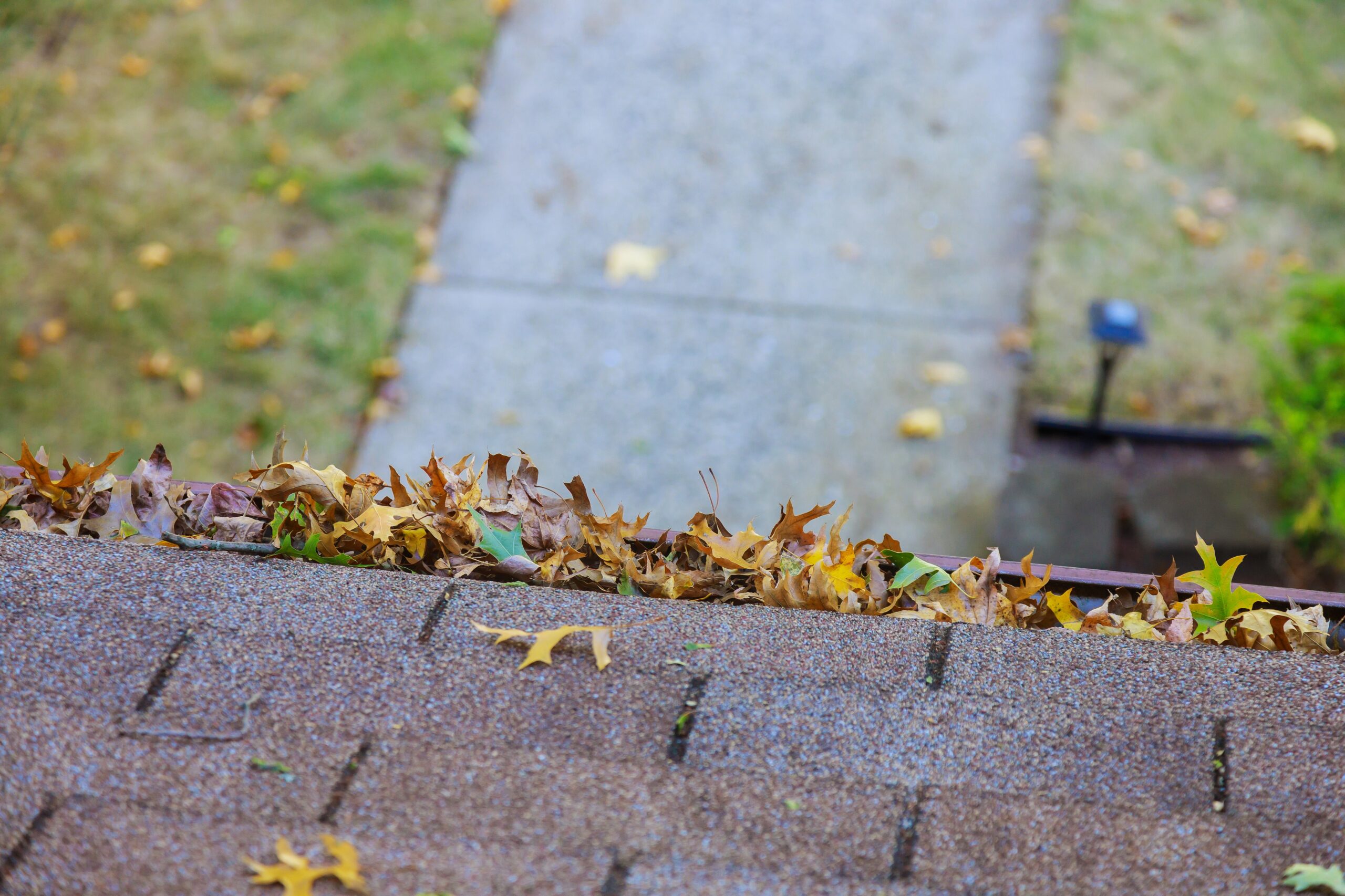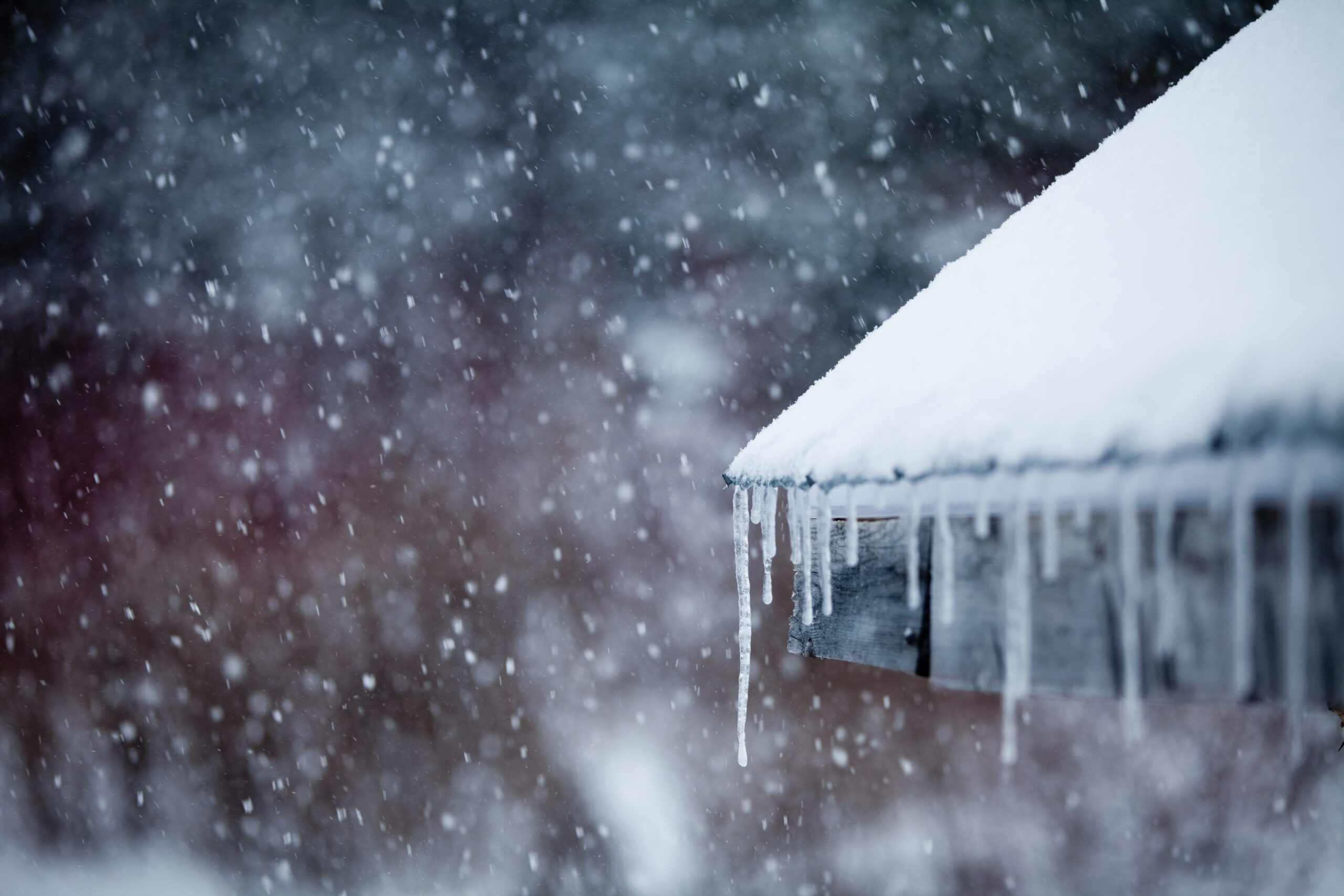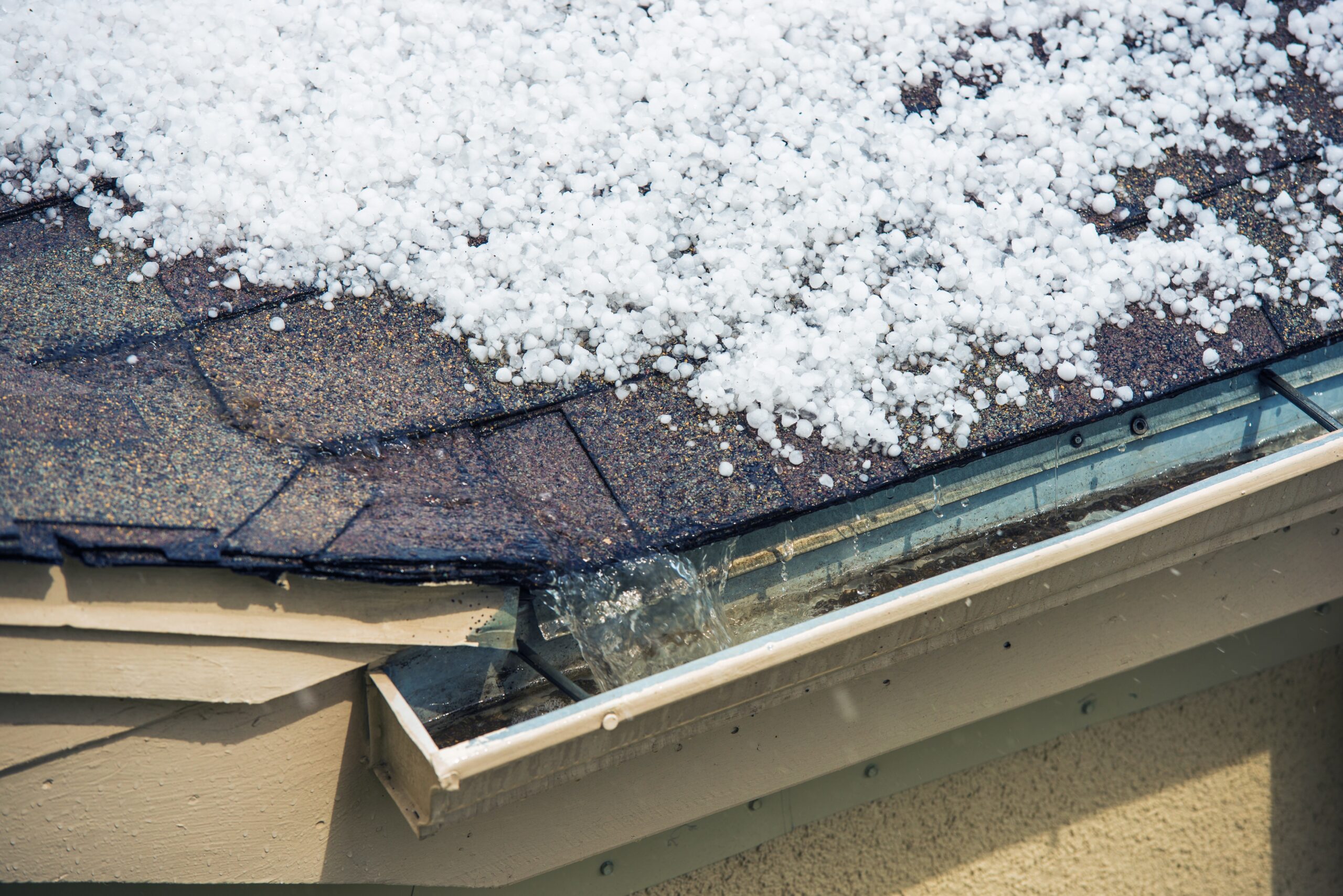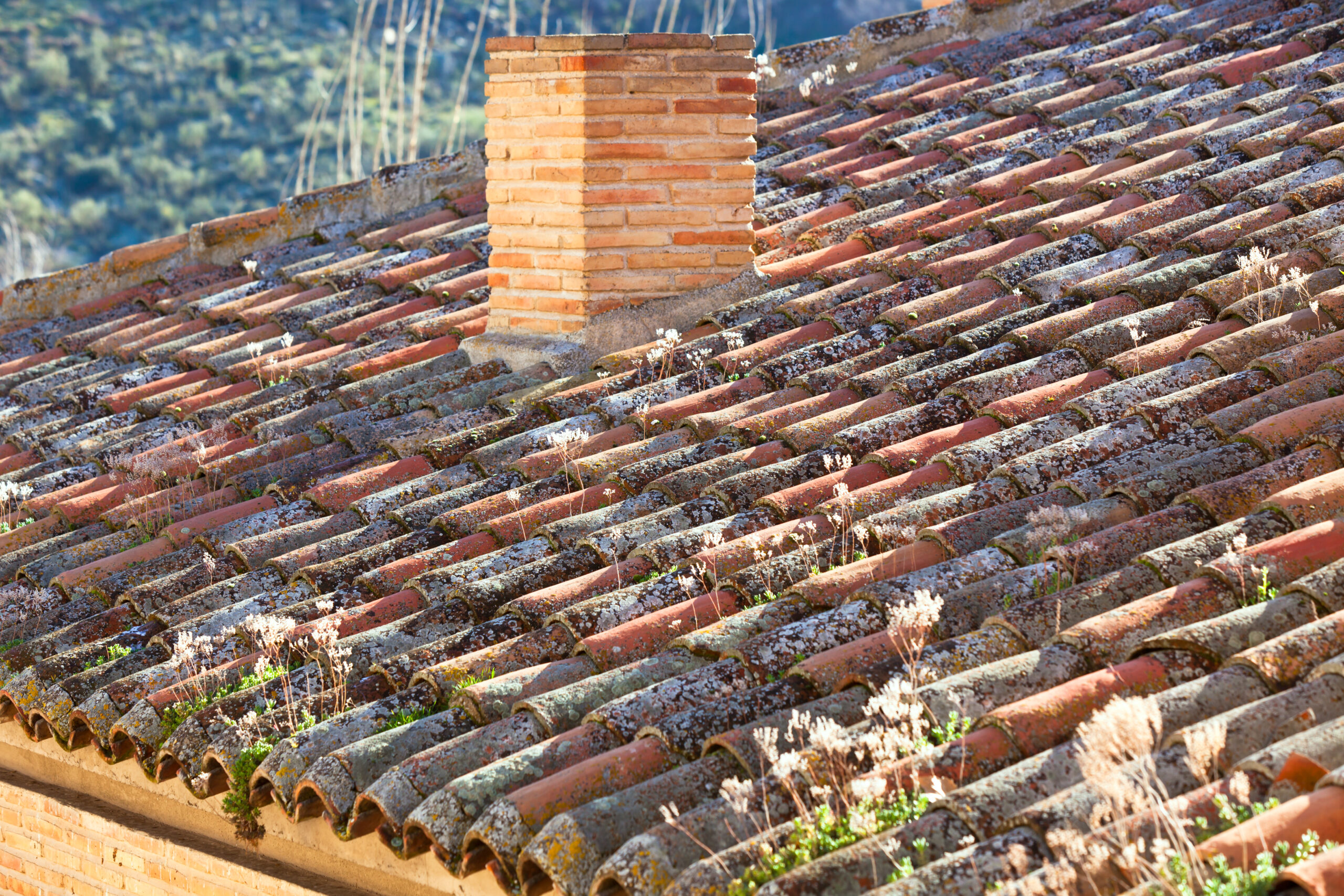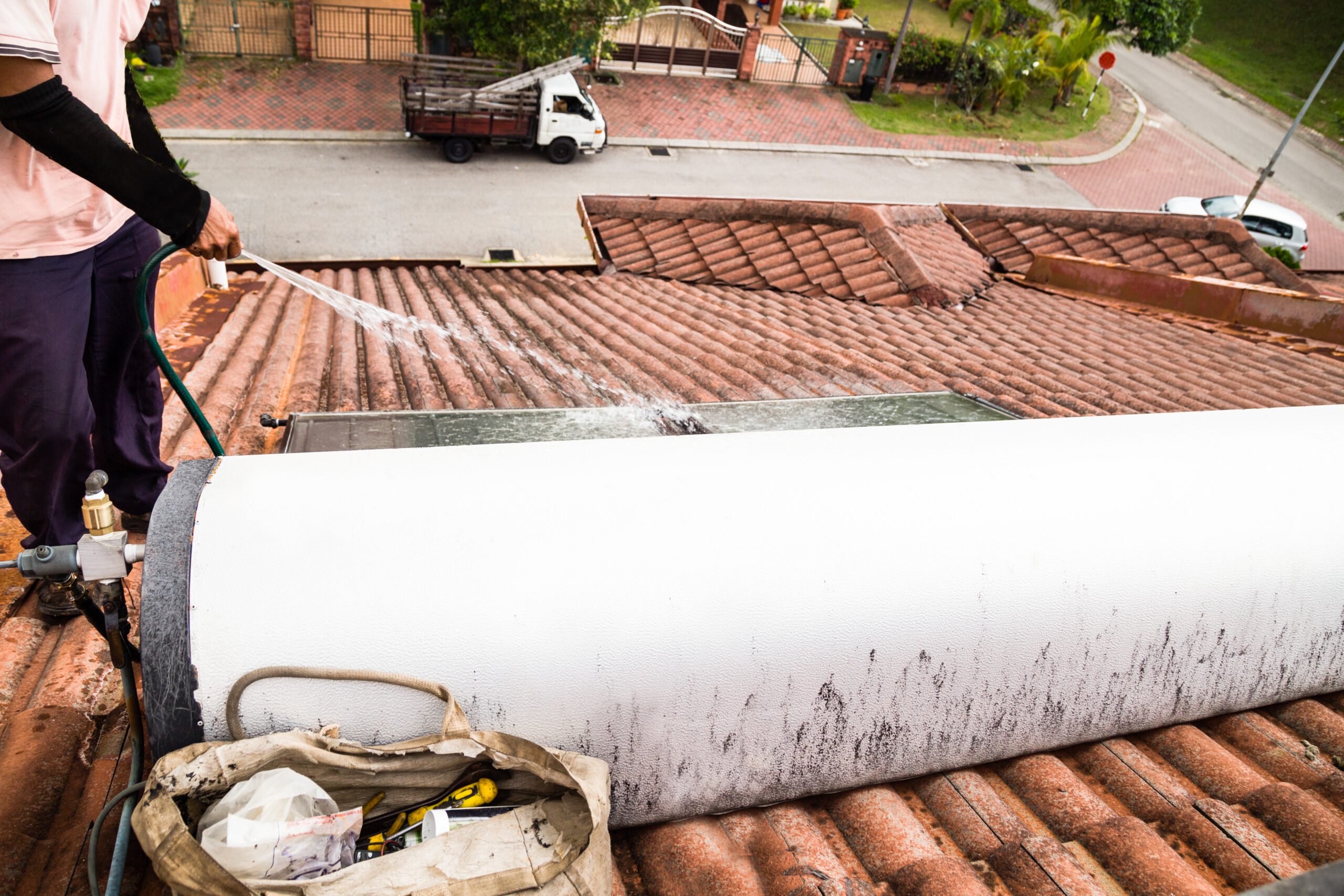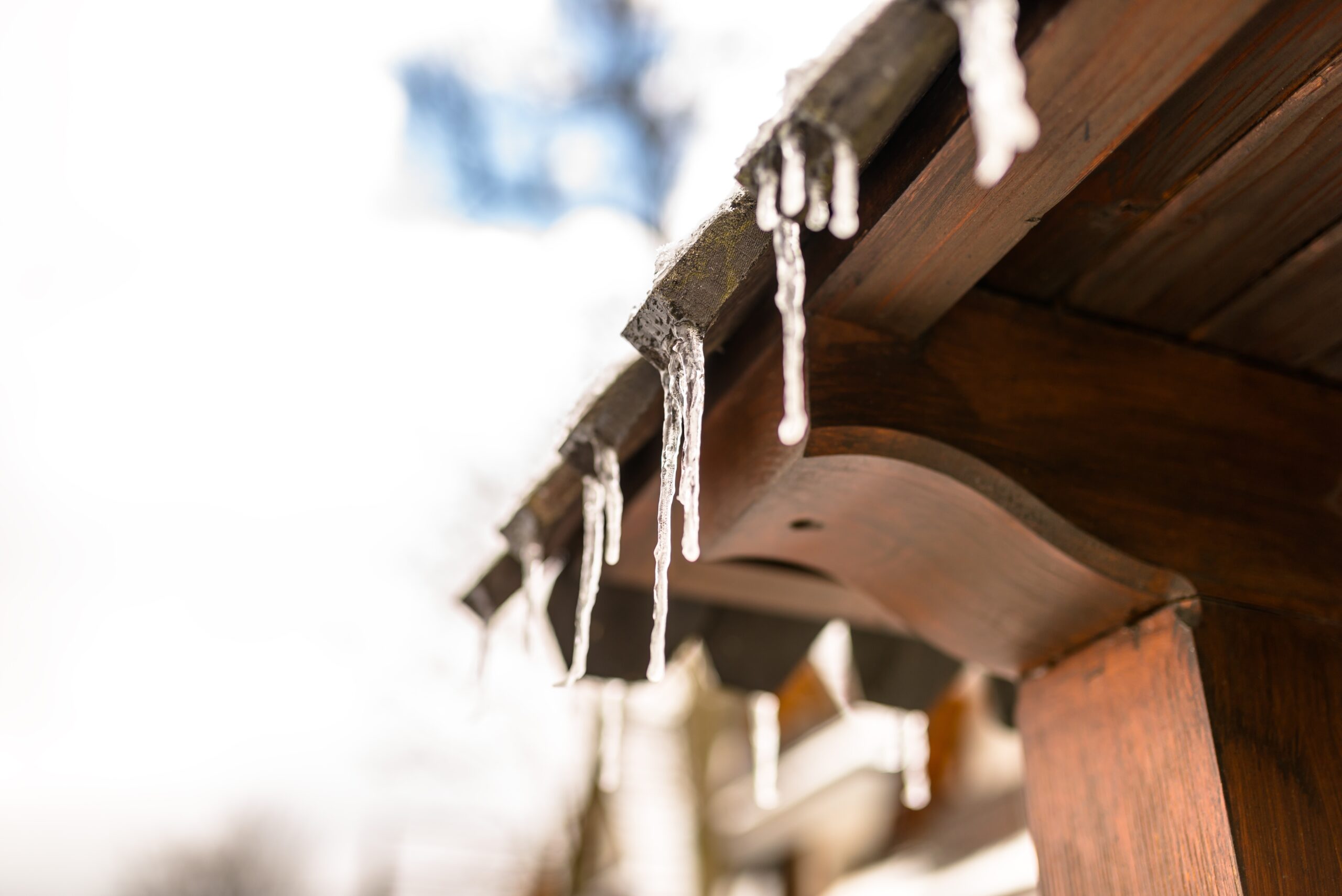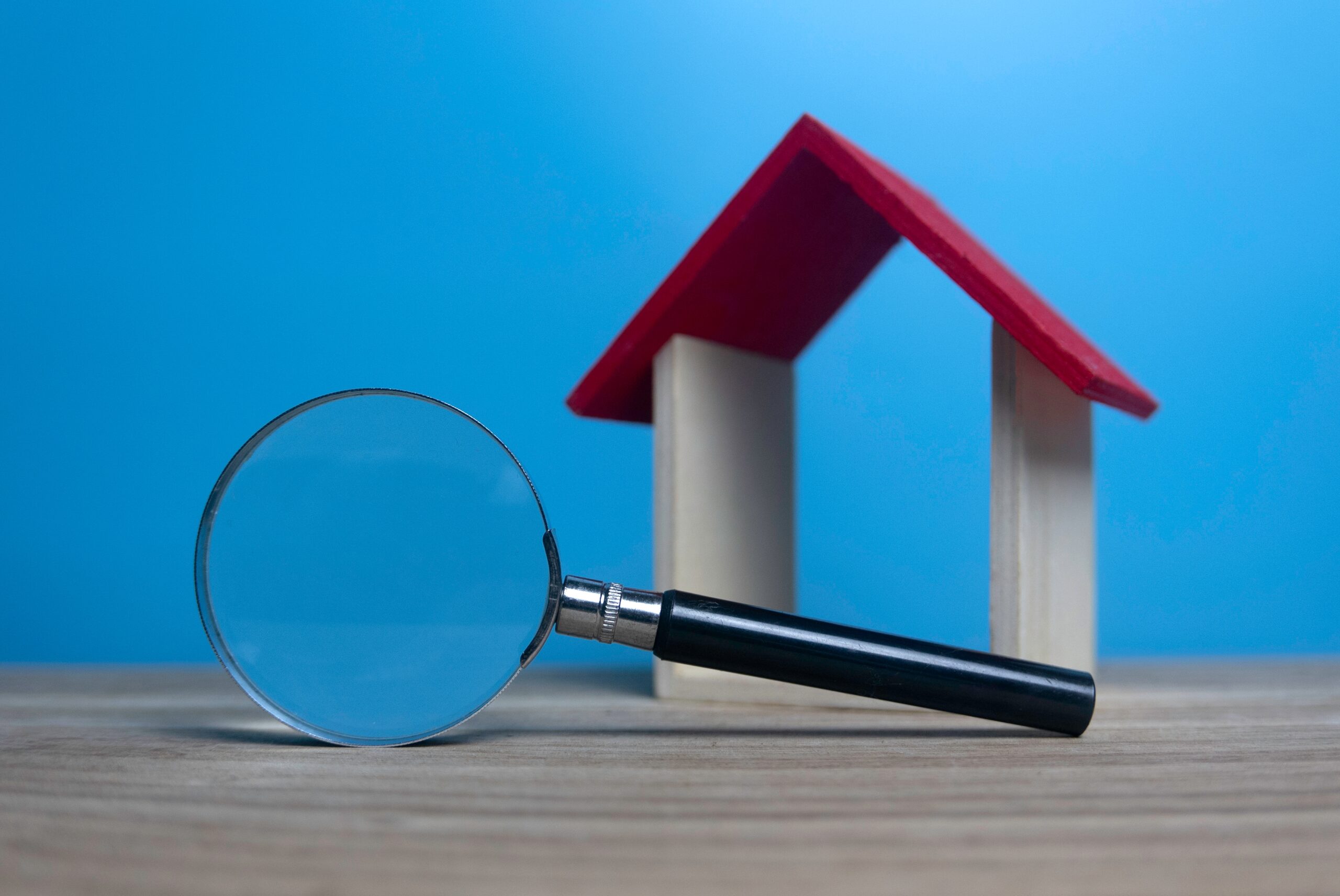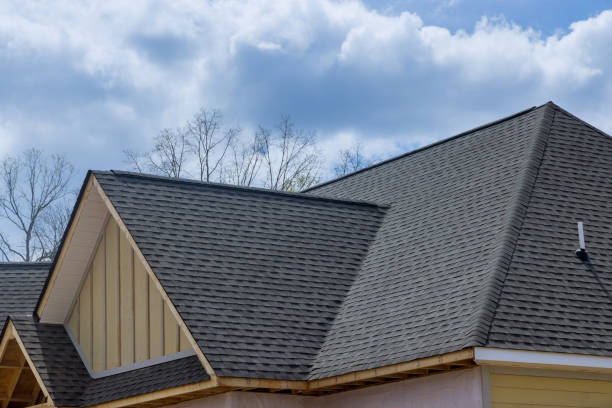Spring Cleaning Roof Checklist
It’s barely the new year, but spring will have rolled around before you know it. It will soon be time to check on your roof to get ready for the summer.
Here is a list of a few things to check once it starts to warm up.
Clear Off All Debris from roof and gutter – We all know that wintertime creates all sorts of messes from trees; this means it’s not just on the ground, it’s also on your roof. If you have a lot of trees that drop leaves, be sure to check your roof and also your gutters for fallen leaves.

Examine Your Roof for Loose Shingles – Look around your roof and ensure all the shingles have made it through the winter. Things like hail and storms through the winter can damage and loosen shingles. It is important to find loose shingles and fix them before they cause any issues.
Damaged Tree Branches – If you have damaged or dangling tree branches close to your roof, have them trimmed or removed. Branches that fall can cause future costly repairs.
Can you replace your roof in the wintertime?
In some climates, like here in Phoenix, winter is a great time to get a new roof. Winter in colder climates isn’t always the ideal time to have your roof replaced because ice and snow can make being on your roof very dangerous.
You also must remember that when your roof is being replaced in the wintertime, your home won’t be as protected as it should be to keep the cold out. While roof replacements under good conditions are quick. You always run the risk of your home being exposed to winter elements. In Arizona, we don’t have to worry too much about super cold temperatures, ice, and snow, but depending on the winter, we have rain, and damp conditions can cause a bit of ice on early morning roofs.

So we say yes, your roof can be replaced in the wintertime; it’s just important to make sure that all the weather conditions are ideal for protecting the safely of workers and your family.
How does hail impact the life of your roof?
Hail is one of those things that happens without warning, and there is no way to protect your roof from it. Depending on where you live, hail can be a once-a-year occurrence or a constant threat to your roof. What is so bad about hail? Does it damage your roof as much as we have all been told?
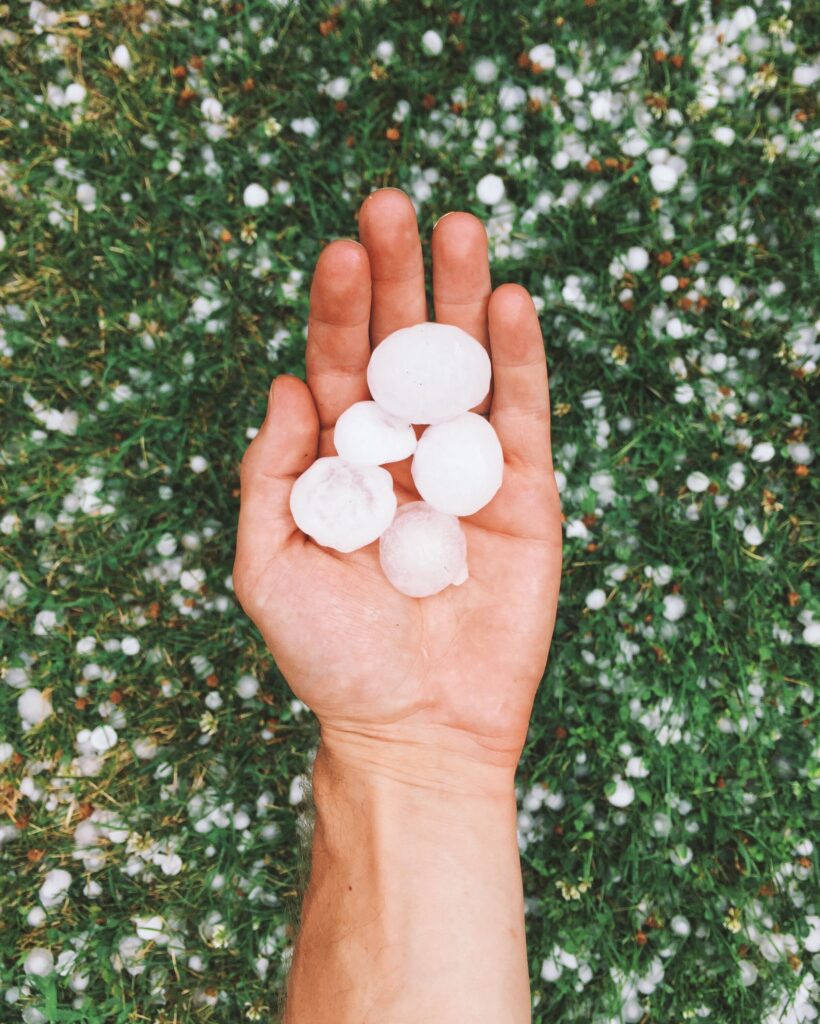
The most common issue that hail causes are leaks. Shingles can be damaged or moved depending on the size of the hail that is hitting your roof. The speed at which hail hits your roof is enough power to shift shingles around or break them, which can lead to leaks in your roof. In addition to leaks, hail can cause holes in your roof, depending on the hail size. Golf ball-sized hail and larger is the most problematic, especially if you haven’t had your roof inspected or replaced in many years. Hail can easily mangle an old or damaged roof.
When your roof is damaged by hail, and it’s not addressed, your roof is exposed to elements like rain and extreme heat and sun that the shingles usually protect it from. Anytime the asphalt under the shingles is exposed too long, the aging process of your roof is accelerated.
After any hail storm, large or small, it’s important to have a trusted roofer inspect for damage.
Standing water on a flat roof
Having gutters installed is the best way to ensure that you have no standing water on your flat roof. Gutters drain and divert the water from the roof and into an area around the house that is a safe distance from the foundation.
If you find standing water on your roof, here are some things you can do. If you have gutters and there is rainwater buildup, be sure to clean and flush the gutters to make sure the path for water to drain is clear. Standing water with clear drains and gutters may mean a low spot on your roof needs repair. If water stands too long in one area, it can create a sag that will hold water even with the best drainage.

If standing water on your flat roof is an issue you can’t solve, please reach out and have a professional check things out. If you have fixed your drainage and standing water is still an issue, have a roof inspection done. A professional can ensure you don’t have water damage or low spots that were created by past standing water.
If you are having issues with standing water on your flat roof, give us a call (602) 743-3175
Have you heard of living roofs?
What is a living roof?
A living roof is a roof that is covered in greenery and plants. A living roof must be properly built and waterproof for plants to thrive.
What is the purpose of a green roof?
Living roofs, or “green roofs,” are aesthetic and a great way to conserve energy by keeping your roof cooler. Like natural insulation, heat is absorbed into the roof instead of attracting it.
Are they good for the environment?
Yes, green roofs not only help with cooling costs, as mentioned above, but they also produce oxygen and remove air particles like all other plants on a larger scale.

Are living roofs hard to maintain?
A living roof requires very little maintenance. The grass and earth protect the waterproof layers from sun damage, so the roof lasts indefinitely. And you never have to paint it or replace tiles.
A few things to consider before dividing if a living roof is for you.
Keep in mind that a living roof isn’t for everyone. They are easy to maintain, but you still need plant knowledge to keep them alive. Climate plays a role in a living roof as well. Dryer climates create the issue of water usage, while humid climates are the best choice for these roofs to thrive with less watering. Also, keep in mind where you live; if you live in a subdivision with an HOA, check with them before making any large changes to your roof. It’s unlikely that your HOA will allow a living roof, as most like for all homes to match color schemes that don’t include green roofs.
Algae and Moss on your roof on Arizona?
Arizona is a “dry heat” most of the year, but not 100% of the time. Check for moss and algae during the monsoon months; once it’s there, it doesn’t go away; it just dries up when the air gets drier. So yes, you do need to check for moss and algae in Arizona. It may be a smaller chance, but never zero.

Moss and algae can cause significant corrosion to your roof’s shingles. If you find moss or algae growth on your roof, removing it or controlling it is important. Cleaning it yourself is easy but a task that only some are willing or ready to undertake. You can get zinc or iron solutions at your local hardware store to prevent further outbreaks. Cleaning a current outbreak can be as simple as dish soap and water but can sometimes need higher-strength cleaners. Please call a professional if you need help cleaning algae and moss from your roof.
Roof cleaning DOs and DON’Ts
- DO use equal parts bleach and water. It’s important to remove not only dirt but any algae or mildew that may be growing.
- DON’T use a power washer on shingles – Power washers are too strong to clean shingles; the force will break them down.
- DO let the bleach and water solution set for up to 20 minutes and then rinse it away with clean water.
- DON’T forget about your plants and shrubbery around your home when rinsing off the cleaning solution. Wet any plants with water and then cover them with plastic to protect them.

- DO clean your roof on a cool day, with cloud coverage and no wind.
- DON’T wait until your roof is covered in algae or moss to clean it. It’s always better to keep your roof clean rather than waiting until it’s a big task.
- DO Hire someone to clean your roof if you are unable to clean it yourself safely.
- DON’T clean your roof without taking proper safety precautions.
Should you replace or repair your roof?
Maybe you have a leak, or there is just a spot on your roof that’s looking a little bit rough; how do you know when it’s time to replace your roof or just repair the damage?
The first step you need to take for any issues with your roof is to get it inspected by a trusted roofing contractor. A professional will be able to search for small damage or structural damage and be able to tell the difference. An inspection is most important because you may not need a full roof repair for a small area, and you wouldn’t want to only patch a small area when your whole roof needs to be replaced.
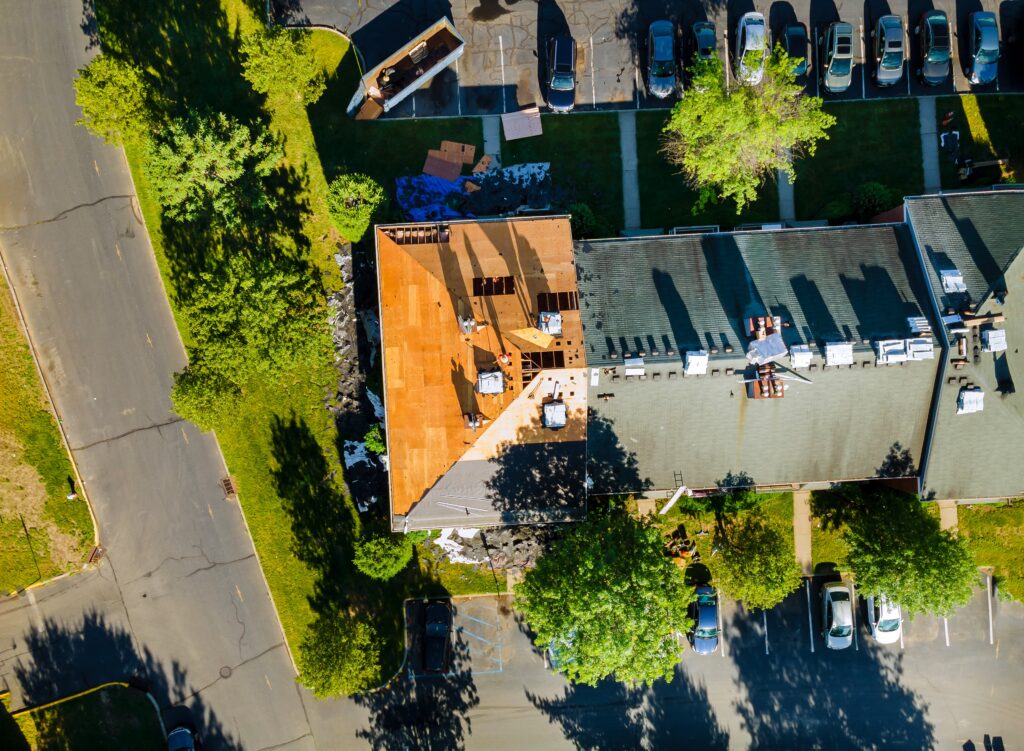
When deciding if you need a repair or replacement, consider the age and condition of your roof also. If your roof is over ten years old and there is significant damage, often the best choice is just to replace the whole thing. If your roof is newer and was just damaged in a small area from a storm or bad weather, then having a repair in that area might be all that’s needed. The general rule of thumb is that if the damage affects more than 30% of your roof, it’s better to replace it.
Oftentimes, cost has a lot to do with people’s decision on repairing or replacing. In the long run, if a professional has recommended a whole new roof, going that route will save money on further damage to the home or the structure that could have been avoided if the roof had been replaced. If cost is something you are concerned with, most homeowners insurance will cover roof replacement, depending on your policy.
If you think there’s an issue with your roof with their, small or large, give us a call for an inspection. 623.743.3175
Preparing your roof for winter.
Check Your Roofline
Check your roof line for sagging. Your roofline should be straight, so any signs of drooping or curving may mean you need to investigate. A saggy roof can cause frame issues, so catching it early is key.
Check Chimney Flashing For Leaks
Chimney flashing is the strip of metal that seals the chimney and your roof and is one of the most common spots for a roof leak. A Leak in the flashing can be mistaken for a leaky roof.
Check to ensure your flashing doesn’t appear damaged or loose and that the caulk hasn’t cracked or deteriorated. Also, look for any signs of water intrusion near the chimney.

Check The Attic For Signs Of Water Damage
In many cases, the first sign of a leaky roof will be seen in the attic. Symptoms of a leak include water spots on the walls and/or puddles of water on the attic floor. If you see any signs of water damage in your roofing system, you can schedule an appointment to have your roof inspected before winter hits.
Remove debris and clean out your gutters
Remove leaves, twigs, and other debris accumulated on your roof and in your gutters. In the winter, leaves, especially in your gutters, become waterlogged and can cause a block leading to water build-up. Water build-up can cause pooling and a leak over time.
If you are more comfortable letting the pros handle a roof inspection give us a call. (602) 743-3175
3 signs you need roof repairs
Interior leaks: Any discolored patches on ceilings are a good sign that your roof needs repairs. Checking attic and crawl spaces for discoloration is also a good idea as often, the damage will show there before the ceilings of the home interior.
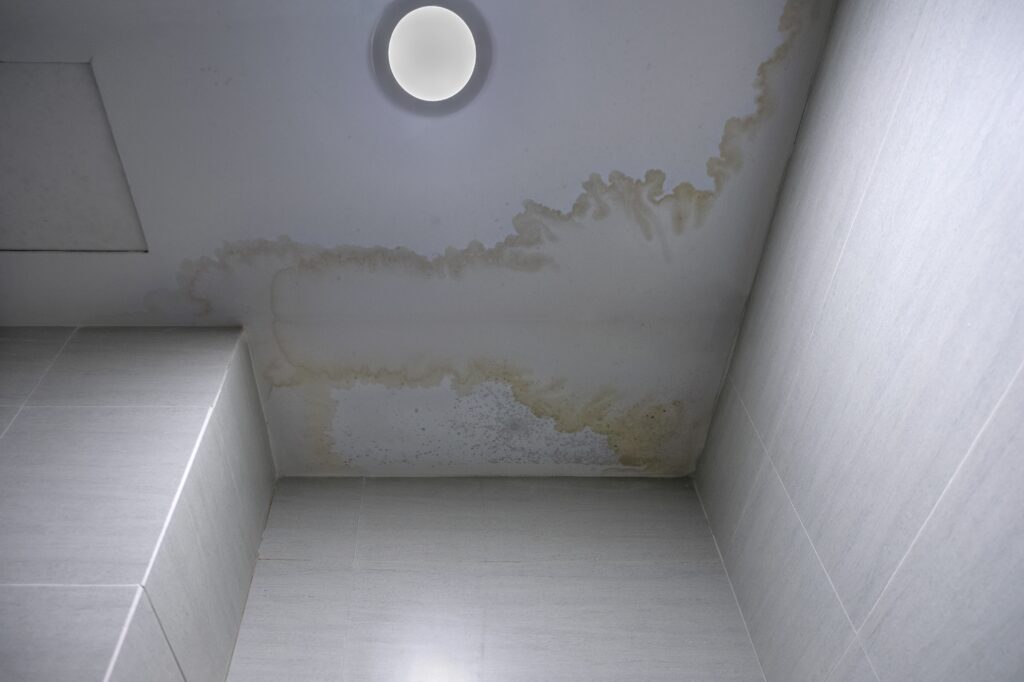
Moldy or moss-covered patches on the roof: Moss on a roof can look very neat, but we can assure you that it is doing more harm than good. Moss or mold means moisture is trapped long enough between or under shingles to promote growth. There should be no standing water or moisture on your roof. Over time moss breaks down your roof and may cause mold or moss to grow inside the home.
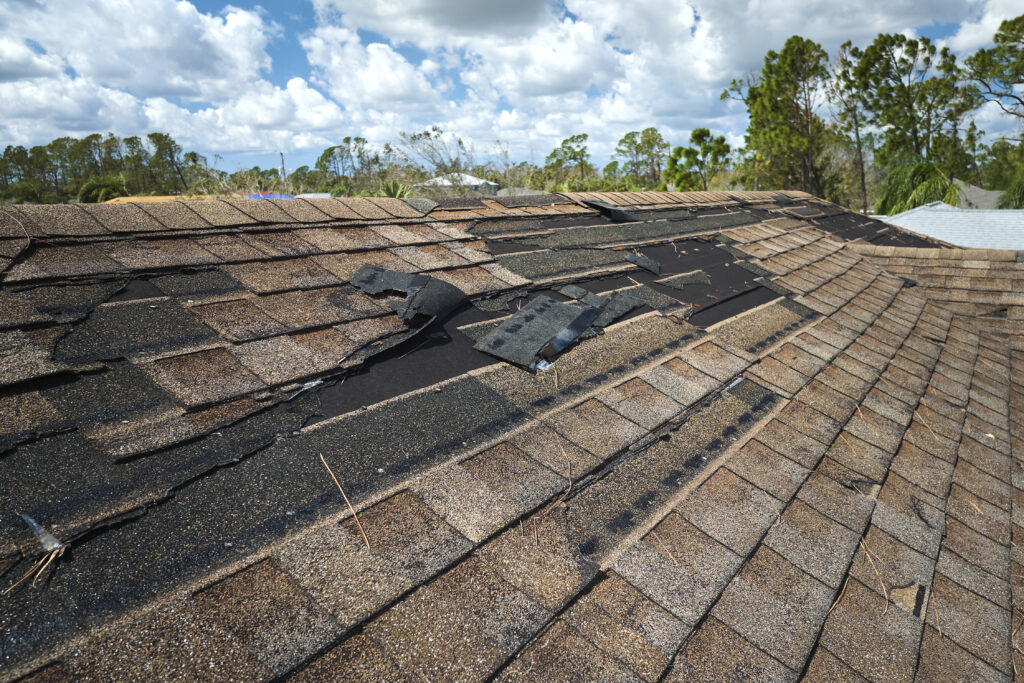
Missing or damaged shingles: After storms, you may have damage without even realizing it. With gusty winds, shingles come loose and can blow away, so there won’t be any signs of fallen shingles on the ground. Getting up to your roof is the best way to check, or give us a call, and we can take a look. Shingles that come loose are a big deal because not only is your roof not being protected in that area of your roof, but they can also fall off and block your gutters and cause more issues.

